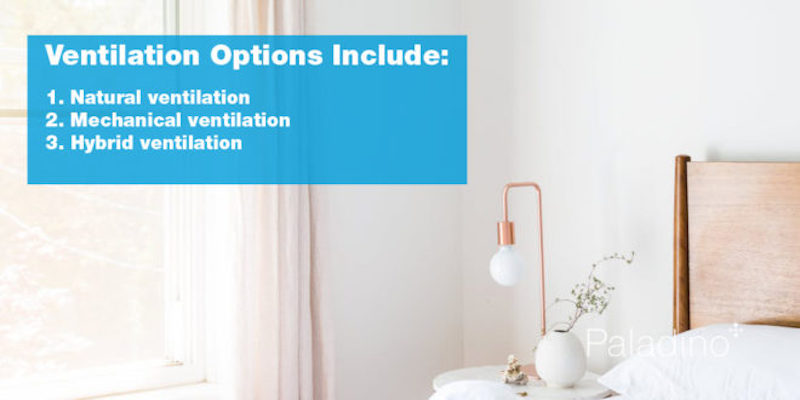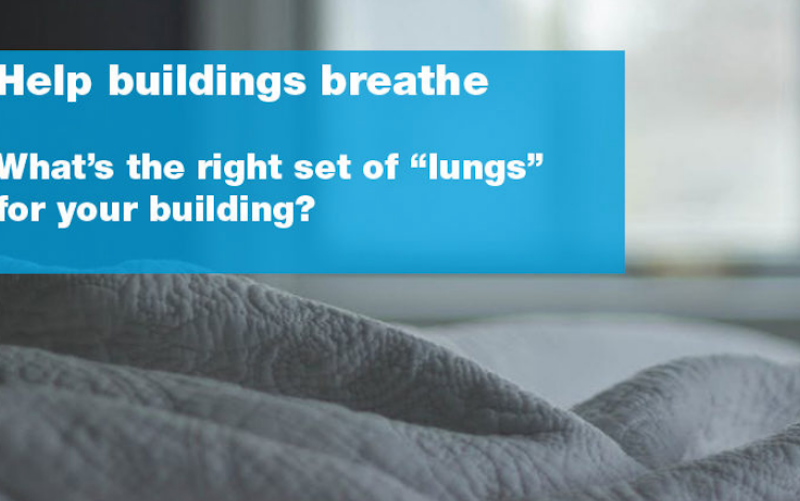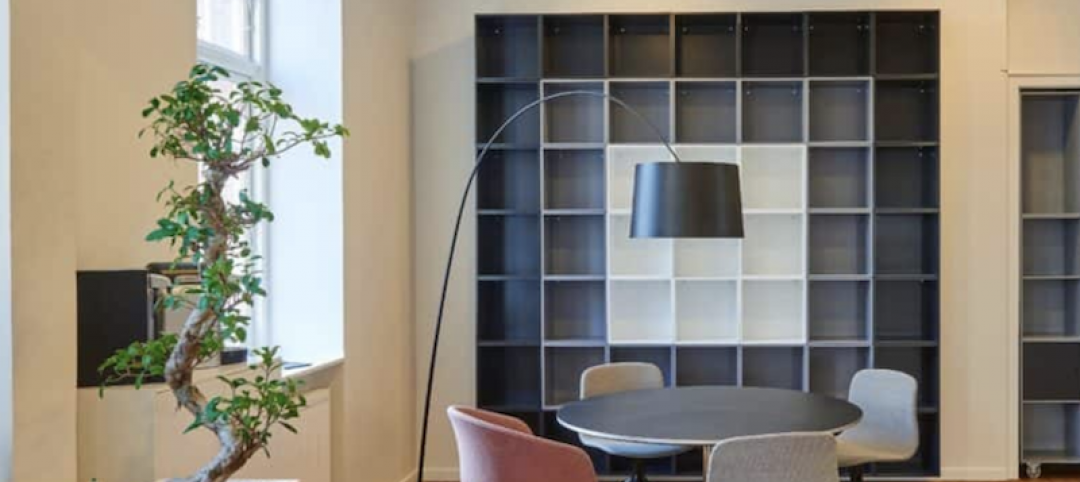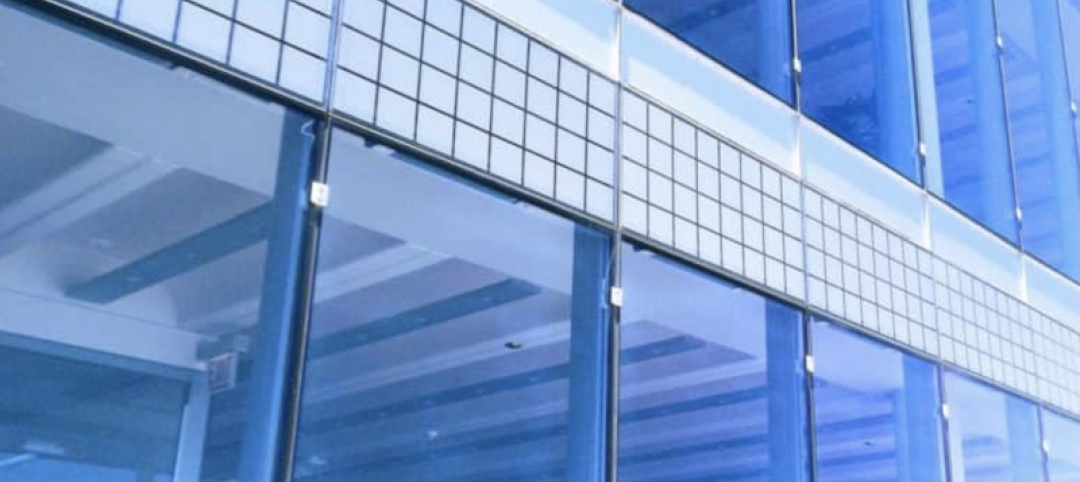There’s a debate within the multifamily building community as to the best way to ventilate residential buildings. There are three competing design options that can be implemented in residential design: natural ventilation, mechanical ventilation, and a hybrid approach.
What’s the right set of “lungs” to put in your building? You need to consider LEED EAp1 requirements, local code requirements, the building’s locale climate, the apartment configuration, the project’s specific exhaust requirements, and more. Here are some things to think about.

Natural ventilation
Let’s start with natural ventilation. Due to lower first costs and lower operating costs (thanks to the need to condition less outdoor air), not to mention the growing demand for wellness, natural ventilation is making a comeback. However, natural ventilation is not always an ideal solution. With the prevalence of wellness trends and industry focus, the USGBC and several local code jurisdictions are using a stricter interpretation of the ventilation and exhaust requirements associated with the ASHRAE 62 compliance paths for both naturally ventilated and mechanically ventilated spaces.
Natural ventilation relies on user-operated windows to provide the required outdoor air to the space. A fully naturally ventilated building takes advantage of prevailing winds and incorporates clearstories and other design components that move air through the building. Natural ventilation leverages the cooling effects of moving air. However, if not properly studied, designed, and operated, a naturally ventilated residential space can develop comfort, humidity, and indoor air quality issues.
Some things to be mindful of with natural ventilation.
• When designing the building layout, the biggest component that should be considered is that a naturally ventilated building limits the effectiveness of the operable windows to 25 feet. Therefore, all spaces need to be permanently open to the operable windows. To satisfy these requirements without an overly complex design of jumper ducts and transfers to move air from one space to another, the apartment should be limited to 25’ deep and provide each space access to an operable window.
• The total area of the operable windows must be greater than 4% of the apartment total square footage. The type of window is also critical, as the total open area of the window varies with the type of operable windows (casement, single/double hung, slider, awning, etc.). If the openings are covered with louvers or other obstructions, the total free area should be used to calculate the total operable window area.
• Based on ASHRAE Standard 62.1, kitchen exhaust does not need to be ventilated outside if the space is naturally ventilated, so dedicated kitchen exhaust is not required; a simple recirculation fan over the stove gets the job done. However, exhaust is required for all bathrooms, as described in ASHRAE Standard 62.1 and the International Mechanical Code. The rates that are required for private (residential) bathrooms are 25 cfm per bathroom, if continuous, and 50 cfm if provided by an intermittent (switched) exhaust fan.
• One limitation with a naturally ventilated building is that there’s no ventilation when the windows are closed. This obvious issue rarely limits the attempts at a naturally ventilated design. For example, in the Washington, D.C. climate zone, the cold winters and hot and humid summers limit the number of days that comfortably accommodate open windows. Therefore, during the long stretches of time when windows are not open, the lack of proper ventilation can lead to comfort and IAQ problems.
Mechanical ventilation options
Mechanical ventilation is a more traditional design approach that supplies outdoor air to the individual apartments via a ducted mechanical system. Outdoor air is supplied directly to the unit’s air handling unit via individual inlets at each apartment, and conditioned with the rest of the return air; or pre-conditioned air is ducted to the individual apartments via a roof-mounted outdoor air unit. Here are a few things to think about when considering mechanical ventilation:
• The required outdoor air volumes are dictated by ASHRAE Standard 62.1 and the International Mechanical Code. Per these requirements, outdoor air needs to be provided at a rate of 5 cfm/person + 0.06cfm/ft2. Occupancy is determined by the number of bedrooms in each apartment. Studios and one-bedroom apartments are sized based on a two-person occupancy rate. Each additional bedroom adds another person into the design calculations.
• Due to International Mechanical Code requirements, outdoor air needs to be provided directly to unit and not through the corridors via undercuts and/or opened entrance doors.
• Unlike a naturally ventilated space, kitchen exhaust is required and needs to be ventilated outside of the apartment via a stack that combines several apartments together or a dedicated duct that is discharged outside of each apartment. Microwave or over-the-range recirculation hoods are not acceptable.
Kitchen exhaust is divided into two categories: General Exhaust and Hood Exhaust. General exhaust can simply be an exhaust grille in the kitchen area that is ducted into the apartment’s general or bathroom exhaust duct. But due to the grease and heat associated with hood exhaust, it is classified as a different level of air stream than general exhaust, and cannot be combined with general, bathroom, or dryer exhaust. The rates that are required for residential kitchens are 50 cfm, if continuous, and 100 cfm if provided by an intermittent (switched) exhaust fan.
Bathroom exhaust is still required for all bathrooms as described in ASHRAE Standard 62.1 and the International Mechanical Code. The rates that are required for private (residential) bathrooms are 25 cfm per bathroom, if continuous, and 50 cfm if provided by an intermittent (switched) exhaust fan.
• Due to the compartmentalized nature of a mechanically ventilated unit, pressurization is critical for proper performance. The design should verify the required exhaust rates and provide a corresponding amount of outdoor air to positively pressurize the unit. A slight positive pressure will help eliminate infiltration from the outside, and prevent discomfort, potential mold issues, and odor migration from adjacent apartments or corridors.
Hybrid ventilation: best of both worlds
As the name implies, natural/mechanical hybrid ventilation incorporates both natural and mechanical ventilation designs. Outdoor air—either raw or preconditioned—is supplied to apartment units via both operable windows and mechanical ventilation. While this approach can provide the best of both worlds, there are several common stumbling blocks:
• The naturally ventilated spaces are defined as the first 25’ of the apartment, similar to the naturally ventilation approach. But unlike the naturally ventilated approach, the unit can be designed deeper than the 25’ limit. Any areas that expand past the 25’ limit require mechanical ventilation.
• The floor area that does not fall within the 25’ limit is must be mechanically ventilated based on the requirements of ASHRAE Standard 62.1, as described in the previous section.
• Depending on the location of the kitchen, it may or may not require exhaust. If the entire kitchen is within 25’ of an operable window, the kitchen is considered naturally ventilated and does not need dedicated exhaust. However, if all or a portion of the kitchen falls outside of the 25’ limit, it is considered mechanically ventilated and therefore requires kitchen exhaust. The types of exhaust and routing follow the same guidelines as a fully mechanically ventilated kitchen.
Bathroom exhaust is still required for all bathrooms as described in ASHRAE Standard 62.1 and the International Mechanical Code. The rates that are required for private (residential) bathrooms are 25 cfm per bathroom, if continuous, and 50 cfm if provided by an intermittent (switched) exhaust fan.
• A hybrid ventilation approach decreases the size of the mechanical equipment due to a smaller volume of outdoor air needed in each apartment. It also provides natural ventilation and allows the occupants to take advantage of the times when the outdoor conditions are suitable. And the mechanical ventilation will provide a minimal amount of fresh air all year, even when the outdoor conditions prevent the occupants from opening the windows. Proper coordination between the design team is a must to ensure that the floor and window areas are accurate for the natural ventilation, and the mechanical ventilation is properly sized to handle the remaining spaces.
Depending on the geographical location and overall design and style of the multifamily building, each of these ventilation options can create an ideal living environment for occupants. It is critical that the design team determine a design approach early in the schematic design phase to prevent problems from emerging late in design or even during the LEED submission process.
More from Author
Paladino | Jan 10, 2022
The future of regenerative building is performance-based
Why measuring performance results is so critical, but also easier said than done.
Paladino | May 26, 2021
Injecting embodied carbon capability into the integrated design and construction process
Embodied carbon is defined as the carbon footprint of a material, and is expressed in metric tons of CO2e.
Paladino | May 12, 2021
Climate modeling for a resilient business and future
This post explores changes that developers and their teams need to make to their risk and resilience strategies by climate modeling for climate change.
Paladino | Apr 26, 2021
Building performance requirements are coming: Are you ready?
Building Performance Requirements are trending nationwide and are likely coming to a county near you.
Paladino | Feb 8, 2021
Six lessons learned from our first Fitwel Viral Response Module certification
The Fitwel Viral Response Module is one of several frameworks that real estate owners and operators can use to obtain third-party certification for their efforts ensuring their properties are ready for a safer and healthier return to work.
Paladino | Jan 14, 2021
Shift your energy to carbon
Now is the right and necessary time for the commercial real estate industry to shift its environmental strategy from just energy, a carbon contributor, to carbon itself.
Paladino | Nov 13, 2020
5 tips when designing for daylight
Daylight modeling is a tool to examine how daylight interacts with a building, and how that natural light behaves within interior spaces.
Paladino | Jul 16, 2020
COVID readiness: IWBI and USGBC seek to help businesses quantify risk
In an effort to address the risks of COVID-19 at the building scale, USGBC and IWBI have analyzed existing certification guidelines and drafted new, relevant content.
Paladino | Jun 5, 2020
3 strategies to improve the wellness of building systems and gain tenant trust
Three operational issues that must be prioritized for every building in order to achieve tenant trust are air quality/ventilation, relative humidity, and building commissioning.
















